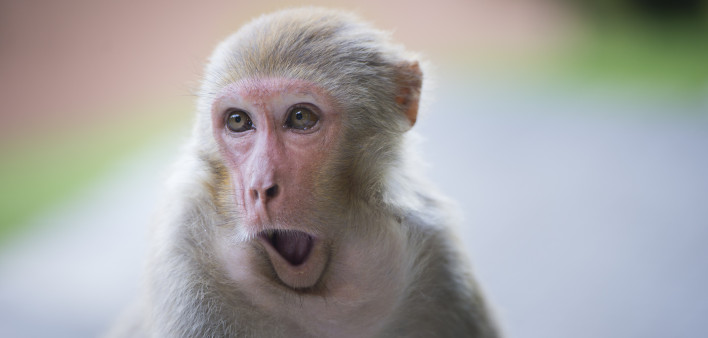Researchers have identified a genetic mutation in humans that for perhaps hundreds of thousands of years protected them against simian immunodeficiency virus (SIV), which plagued their primate cousins.
But at some point in recent history, SIV itself mutated to outmatch the human mutation. At that point, the immunodeficiency virus finally made the crossover into the human population, ultimately giving rise to a massive global HIV pandemic during the last decades of the 20th century.
Publishing their findings in Cell Host & Microbe, researchers at the University of California, Berkeley, used cryo-electron microscopy (cryoEM) to determine the structure of an intertwined complex of three proteins that develop in SIV-infected primates (sooty mangabeys, in this case), one that leaves the animals susceptible to the virus spreading cell to cell.
One of the proteins in this complex is called tetherin, which is normally found on the surface of immune cells. When such cells are infected by SIV, tetherin inhibits the release of new copies of the virus by stapling, or tethering, them to the surface of the cell. As those trapped new viruses accumulate on the cell, this signals the immune system to destroy the cell and, along with it, the viral copies.
To get around this process, SIV expresses a protein called Nef, which binds with tetherin and another primate protein called AP-2 into a tightly bound complex. The cell responds by digesting the complex, along with it the tetherin. Thus, SIV clears the cell surface of the tetherin that would block its journey out into the body in search of new cells to infect.
Humans developed a mutation in their tetherin that prevented such three-protein complexes from forming. This mutation led to a loss of five amino acids from tetherin, which resulted in a loosening of the binding between the protein, Nef and AP-2. The result is that tetherin escapes getting entwined into the complex and retains its function as protection against new copies of virus emerging from immune cells.
“This conferred an advantage on our prehistoric ancestors: From chimps on down, every primate was susceptible to SIV, but humans were immune,” James Hurley, a UC Berkeley professor of molecular and cell biology, said in a press release. “That gave humans probably a grace period of tens to hundreds of thousands of years to develop without having to deal with this disease. I tend to think that really gave a leg up to humans in early evolution.”
At some point, variants of SIV acquired a new protein, called Vpu, that assumed the same function as Nef in the three-protein complex. This permitted strains of the virus to cross over into the human population.
“There were probably many crossovers into humans that failed, but eventually, some hunter in Africa, perhaps in the course of butchering a chimp, was exposed to the blood, and the virus then acquired an additional mutation, a small step that turned SIV into HIV,” Hurley said.
The UC Berkeley investigators hope that their research will eventually guide them toward new targets for HIV cure therapies.
To read a press release about the study, click here.
To read the study abstract, click here.







Comments
Comments